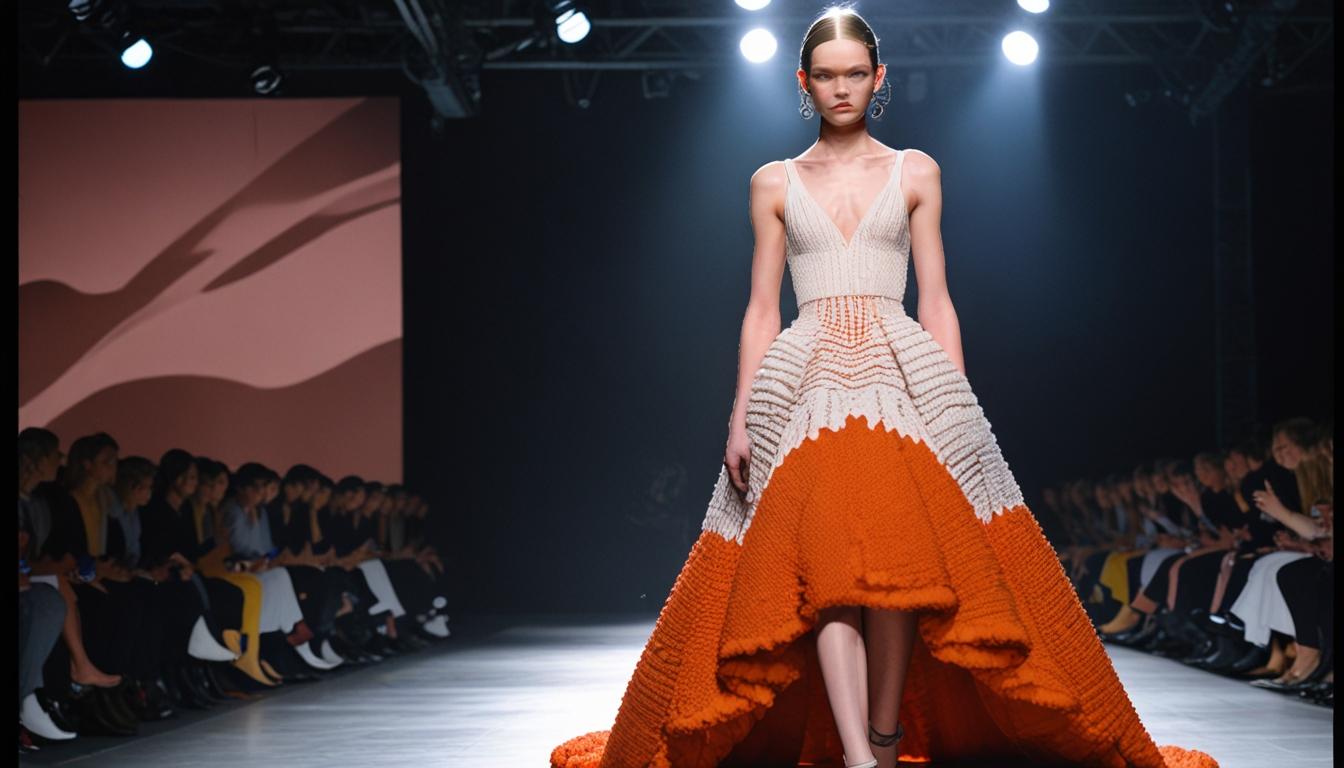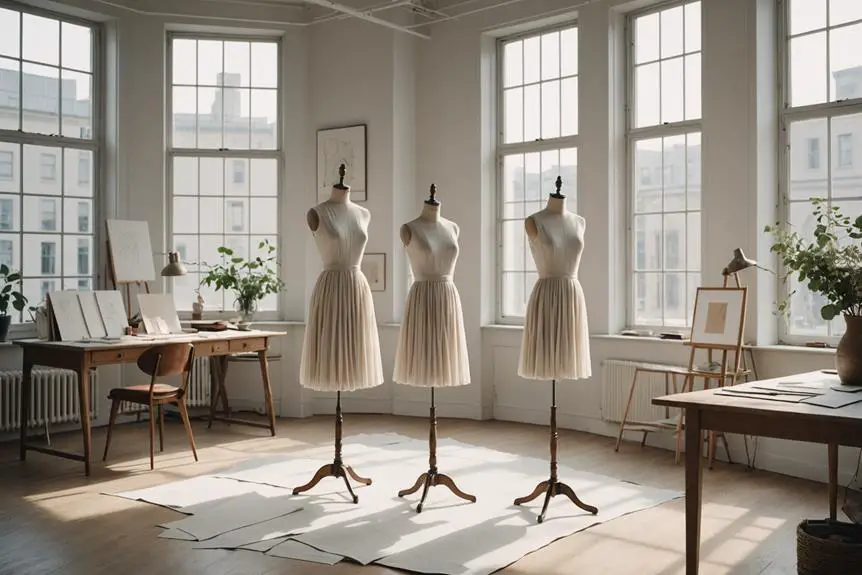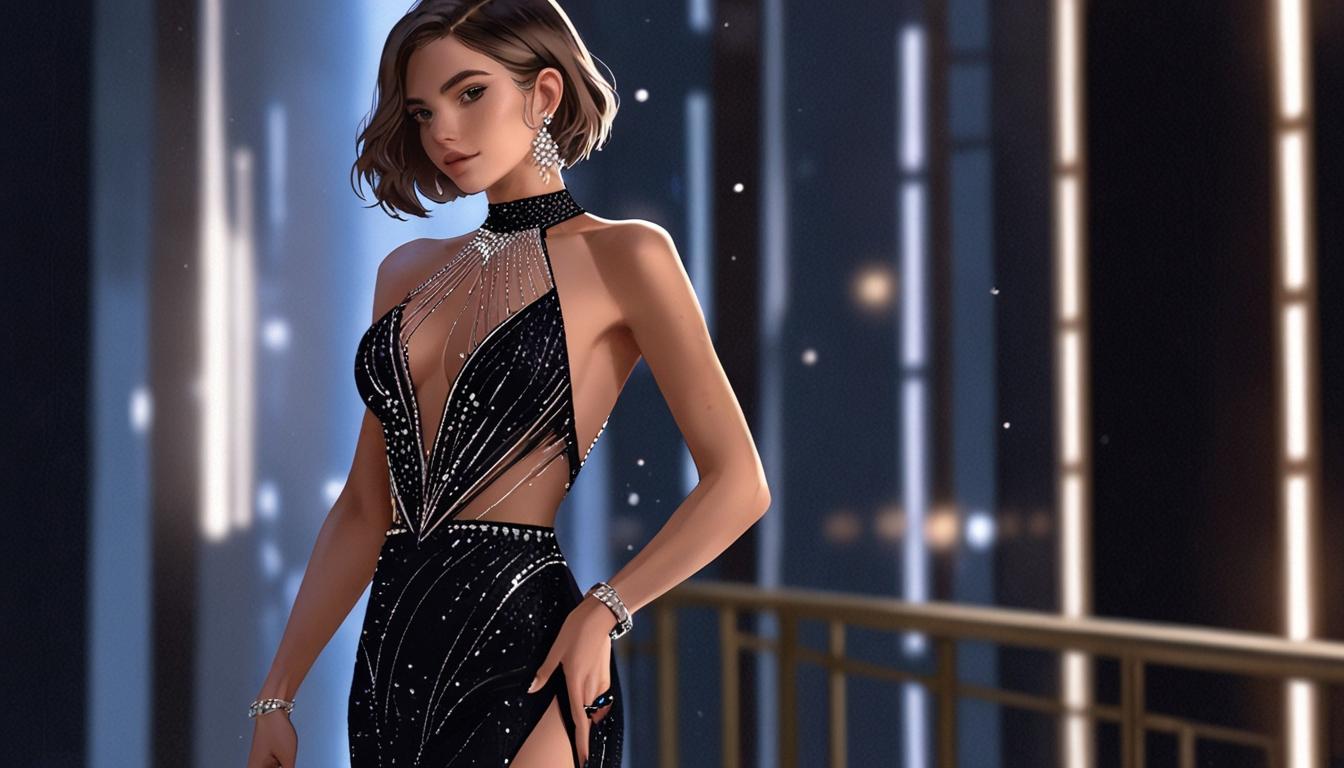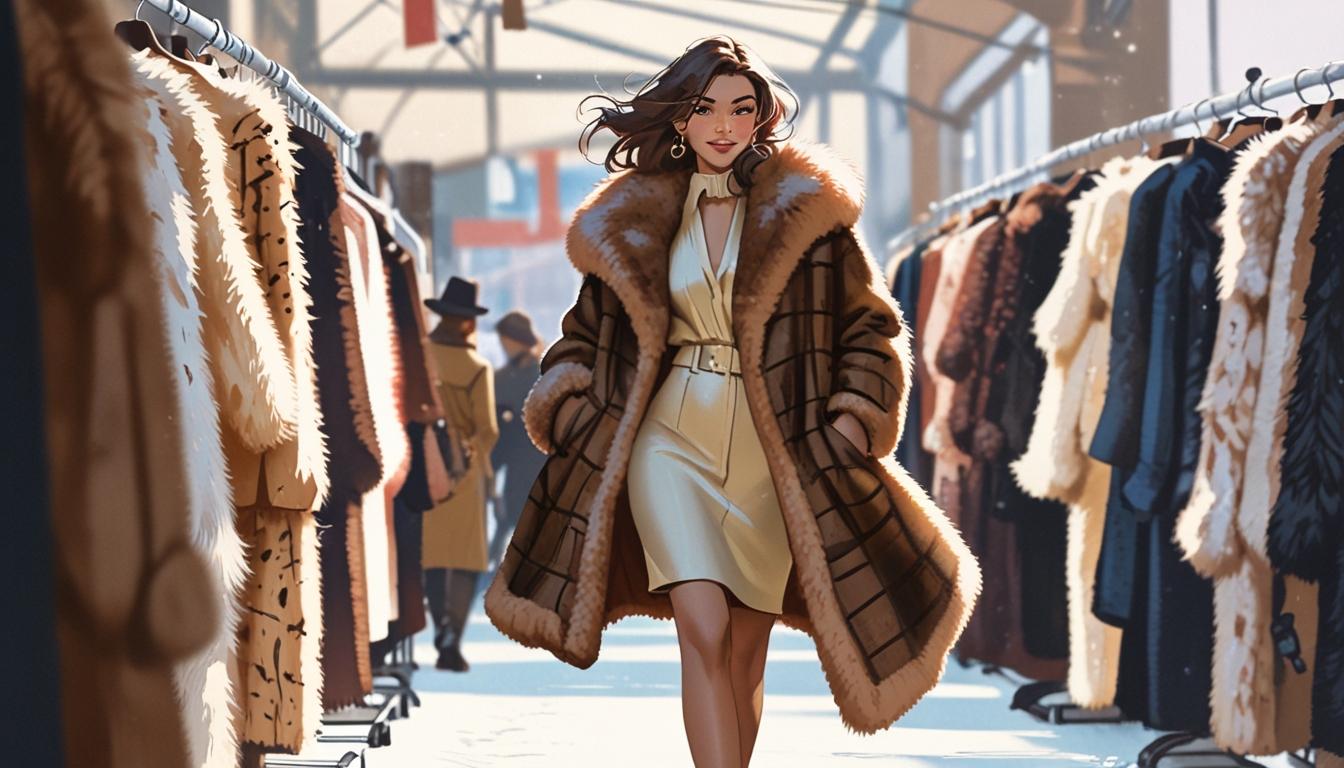London: Vivienne Westwood’s latest autumn collection, ‘On Liberty’, features a modern take on the traditional bustle, aiming to redefine women’s silhouettes amidst a critique of comfort dressing. Model Kate Moss champions Westwood’s vision of embracing diverse female shapes, igniting discussions on femininity and empowerment.
In a striking move that pays homage to historical fashion, Vivienne Westwood has unveiled her latest autumn collection, titled “On Liberty.” The collection prominently features a contemporary twist on the traditional bustle, reimagined as a padded cushion secured by a fabric tie. This innovative design choice allows the bustle to be worn under form-fitting knitted dresses or to peek out from the back of stylishly cut skirts. Lucinda Alford, writing in the Observer Magazine on 18 September 1994, describes the look as a fusion of Betty Boop and a pantomime dame, drawing inspiration from the 19th-century bustle while promoting an air of hyper-femininity.
In her critique of the fashion landscape, Westwood has expressed her dissatisfaction with the prevailing trend towards comfort dressing characterised by loose-fitting and baggy clothing. She has labelled this trend as “sloppy mediocrity,” positioning her new collection as a bold alternative that aims to redefine women’s silhouettes. Westwood has articulated her vision, stating that the new design “idealises women and their feminine shape,” suggesting that it has the potential to create a slimming effect by emphasising the waist.
Model Kate Moss has defended Westwood’s avant-garde approach, calling the designer “brave.” Moss asserts the importance of Westwood’s message that “it’s OK to be a different shape,” drawing attention to the designer’s commitment to celebrating women’s forms. Westwood’s intention with the collection is to evoke what she terms an “extreme feminine shape,” challenging conventional notions of beauty and femininity.
Despite the boldness of the padded bustle, questions emerge regarding its reception among women. Alford poses significant queries surrounding the implications of such a statement piece. While traditionally, women’s dressing practices have been influenced by societal perceptions of sexuality and availability, the context appears to have evolved. “Dressing sexually used to be viewed as a sign of availability; now it is as likely to be a statement designed to confront or challenge male values,” Alford notes, highlighting the complex interplay between fashion and identity.
The fashion dialogue surrounding Westwood’s collection unearths layers of meaning about female self-expression and empowerment. Alford asserts that when women become indifferent to the interpretations of their attire, “then women really will have discovered the art of power dressing.” As Westwood’s designs bridge the gap between historical inspiration and modern expression, the fashion world continues to grapple with the nuances of femininity and the power dynamics embedded within clothing choices.
Source: Noah Wire Services





Hey, I think your blog might be having browser compatibility issues.
When I look at your blog in Safari, it looks fine but when opening
in Internet Explorer, it has some overlapping.
I just wanted to give you a quick heads up! Other then that, amazing blog!